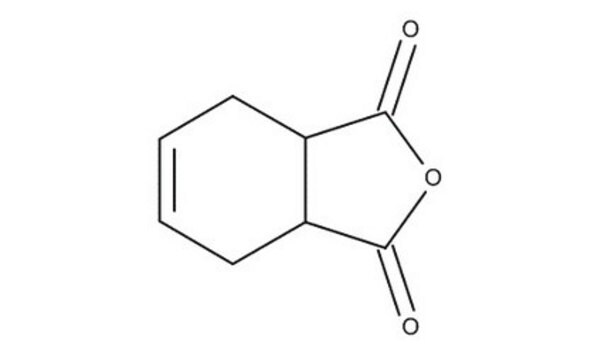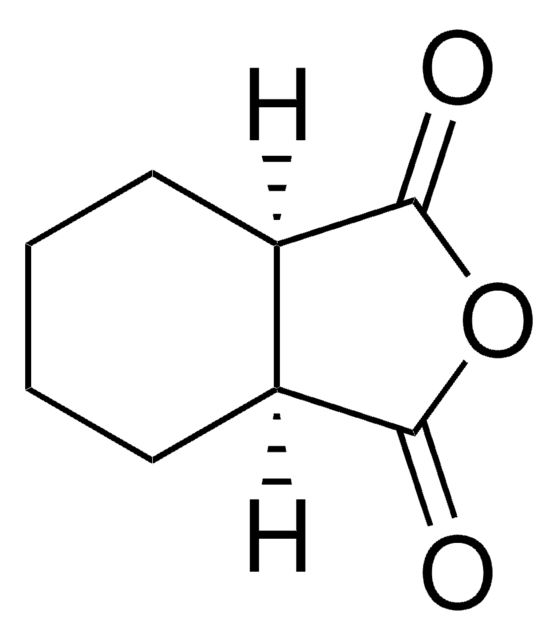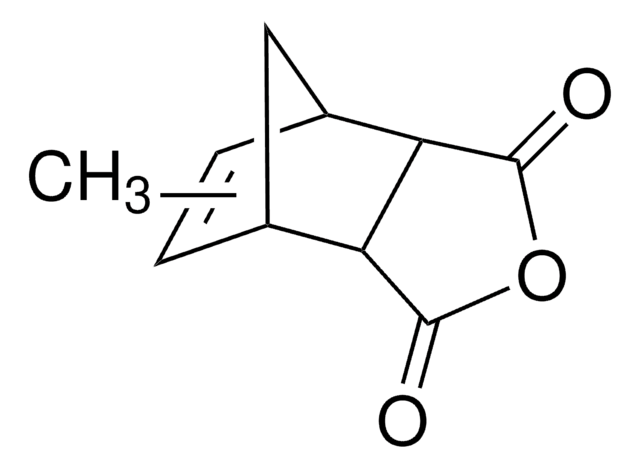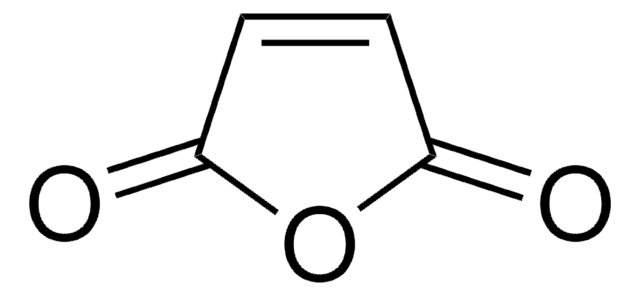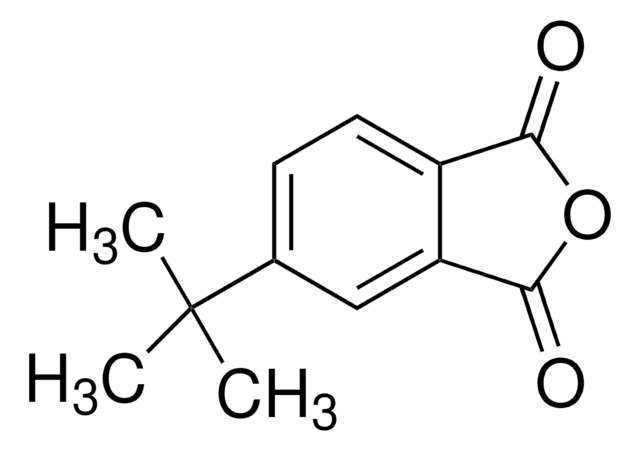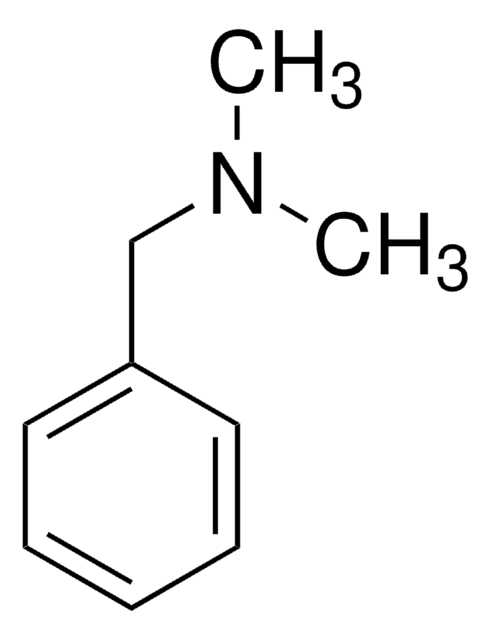149934
Hexahydro-4-methylphthalsäureanhydrid, Mischung aus cis und trans
96%
Synonym(e):
4-Methyl-1,2-cyclohexanedicarboxylic anhydride
About This Item
Empfohlene Produkte
Qualitätsniveau
Assay
96%
Brechungsindex
n20/D 1.477 (lit.)
Dichte
1.162 g/mL at 25 °C (lit.)
SMILES String
CC1CCC2C(C1)C(=O)OC2=O
InChI
1S/C9H12O3/c1-5-2-3-6-7(4-5)9(11)12-8(6)10/h5-7H,2-4H2,1H3
InChIKey
FKBMTBAXDISZGN-UHFFFAOYSA-N
Suchen Sie nach ähnlichen Produkten? Aufrufen Leitfaden zum Produktvergleich
Anwendung
- Limonene-based epoxy: Anhydride thermoset reaction study: This research explores the thermosetting reactions of limonene-based epoxy using hexahydro-4-methylphthalic anhydride, illustrating its application in creating environmentally friendly polymers (Couture et al., 2018).
- Metallocene catalysts for the ring-opening co-polymerisation of epoxides and cyclic anhydrides: Discusses the application of metallocene catalysts in ring-opening copolymerization involving hexahydro-4-methylphthalic anhydride, relevant for developing new polymeric materials (Shaw et al., 2022).
- Evaluation of Natural and Modified Castor Oil Incorporation on the Melt Processing and Physico-Chemical Properties of Polylactic Acid: Explores the use of natural oils modified with hexahydro-4-methylphthalic anhydride to enhance the properties of polylactic acid, a study significant in biodegradable plastics (Darie-Niță et al., 2022).
- Synthesis, characterization, and recycling of bio-derivable polyester covalently adaptable networks for industrial composite applications: Investigates the use of hexahydro-4-methylphthalic anhydride in creating adaptable networks for industrial applications, enhancing the sustainability of materials (Wang et al., 2024).
- Epoxidized linseed oils based networks. Case of thermal degradation: Discusses the thermal degradation of networks made from linseed oils cross-linked with hexahydro-4-methylphthalic anhydride, which is pivotal in understanding the stability and life span of bio-based polymers (Richaud et al., 2019).
Signalwort
Danger
H-Sätze
Gefahreneinstufungen
Eye Dam. 1 - Resp. Sens. 1 - Skin Sens. 1
Lagerklassenschlüssel
10 - Combustible liquids
WGK
WGK 1
Flammpunkt (°F)
235.4 °F - closed cup
Flammpunkt (°C)
113 °C - closed cup
Persönliche Schutzausrüstung
Eyeshields, Faceshields, Gloves, type ABEK (EN14387) respirator filter
Hier finden Sie alle aktuellen Versionen:
Besitzen Sie dieses Produkt bereits?
In der Dokumentenbibliothek finden Sie die Dokumentation zu den Produkten, die Sie kürzlich erworben haben.
Kunden haben sich ebenfalls angesehen
Unser Team von Wissenschaftlern verfügt über Erfahrung in allen Forschungsbereichen einschließlich Life Science, Materialwissenschaften, chemischer Synthese, Chromatographie, Analytik und vielen mehr..
Setzen Sie sich mit dem technischen Dienst in Verbindung.
